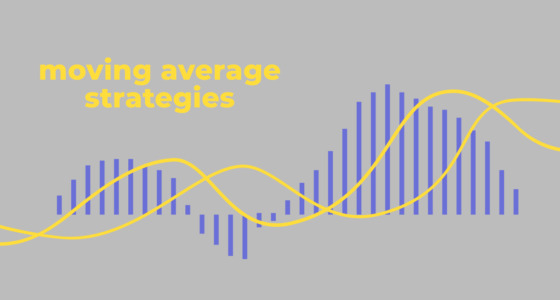

The situation in financial markets changes rapidly. It’s vital to catch these changes and stay calm to make the right decisions. It’s a well-known fact that newbie traders close potentially successful trades as soon as the market turns in the opposite direction of their forecast. This happens because they are afraid of potential losses.
Trading strategies were developed to help newbies avoid such mistakes and allow professional traders to shorten the time spent on trades. Richard J. Dennis, a creator of the turtle experiment, which confirmed that anyone could be taught trading, managed to earn $200 million over ten years from trading on the commodity market. Not least thanks to a chosen strategy.
In this article, you will find out how trading strategies work and how to choose them according to your personal goals.
Trading strategy: definition
Let’s start with a short definition of the trading strategy term. The trading strategy can be compared to a step-by-step plan, which takes into account the various factors and requirements of a trader. The trading technique includes entry and exit points workable in certain conditions (fundamental factors or technical analysis signals). It provides certain steps that should be strictly followed. Of course, you can modify them, but you should do that before you open a real trade.
According to an experiment held by psychology researchers Naomi Eisenberger, Matthew Lieberman, and Kipling Williams, “doing something different from the crowd is the investment equivalent of seeking out social pain.”
Basic strategies don’t consider a subjective trader’s data, including funds available and a trader’s risk tolerance. However, any consistent and effective strategy relies on in-depth technical analysis, including patterns and indicators. Trading strategies have to be stress-tested under various market conditions to prove their reliability.
Where to find a strategy
You can search for strategies in blogs, books, and trader forums, as well as on YouTube. While it’s quite easy to choose a book, as they are mostly written by professionals, it may be more difficult to determine reliable blogs and forums. Usually, the most reliable websites are listed on the first page of a Google search. The strategies are either written on brokers’ or educational websites. Both options are the best for learning trading techniques.
Also, if that all wasn’t enough, search for online courses. For many people, interactive and structured courses work best. The Internet allows you to find what’s best for you.

Key points
Now you know where to find trading strategies. But you still don’t know what to look for exactly. Below, you will find a list of the main criteria that should be considered when choosing a trading strategy to learn.
1. Determine the asset to trade
Although there are many financial instruments that can be traded, the most popular assets are stocks, currencies, crypto, and commodities.
- Commodity. Commodity trading involves buying and selling commodities, including natural resources (oil and gas), metals (gold and silver), and soft commodities (cocoa, coffee, wheat, and sugar). The strategy should be chosen based on market volatility. For instance, oil is considered a highly volatile asset, while gold is a safe-haven instrument. Agricultural products usually have low market liquidity, leading to increased market volatility.
- Currency. Currency trading is the buying or selling of currency pairs on the foreign exchange market. Currencies are the most traded asset. However, some currencies have high liquidity as they are widely traded, for instance, basic currencies. At the same time, exotic currency pairs have low liquidity. There are currency pairs with high and low volatility.
- Stocks. When a company lists its shares on a stock exchange, these shares can also be traded via a broker. The stock market is highly volatile and depends on much fundamental data. Thus, your trading strategy should consider fundamental events that will impact entry and exit points.
- Crypto. Cryptocurrency trading involves both risks and returns because of its high volatility. Risks can be mitigated through hedging or diversification. The cryptocurrency market is driven by supply and demand, like most financial markets. However, factors that affect the crypto market differ. Thus, you should be aware of them when choosing a trading technique.
2. Time constraints
You should decide how much time you can spend on trading. Trading strategies vary depending on this factor, too. It can be either a short-term strategy that will allow you to open small positions or a long-term technique that will require significant funds.
3. How much you can risk
You should remember that trading bears risks. Before you start, sit down and decide how much you want to risk. Remember that most successful traders risk no more than 2% of their capital per trade.
The risk-reward ratio is a ratio of the potential returns and losses of a transaction. It determines the distance between the entry and exit points of a transaction. Any trading strategy must include stop-loss and take-profit levels. As trading strategies include basic steps, you should always customize them according to your personal data.
4. Practice
It’s not possible to learn a trading strategy if you don’t practice it. Most brokers offer demo accounts. It will help you practice strategies without risking real funds. Focus on basic trading approaches if you are a beginner trader. If you are a professional investor, practicing allows you to experiment and create your own approach.
To sum up
To learn a trading strategy, you should always know your goals, trading type, the time you can spend on trading, and the amount of capital you own. Otherwise, you won’t be able to find a strategy and learn it. However, you should remember that profitable trading strategies are difficult to develop, and there is always a risk that they won’t work. Don’t over-rely on a strategy and customize it according to market conditions.








